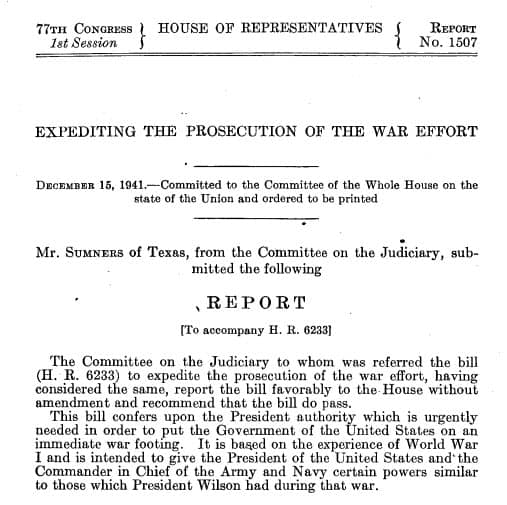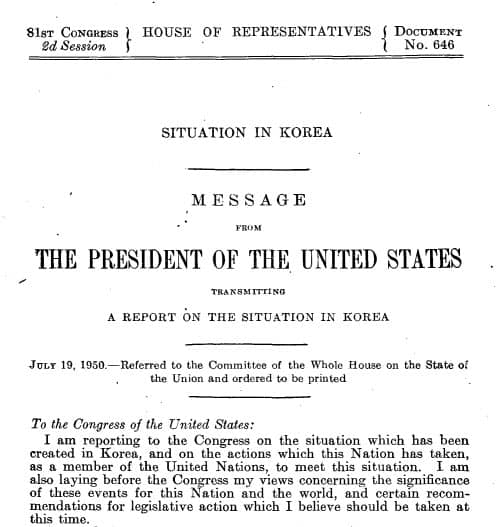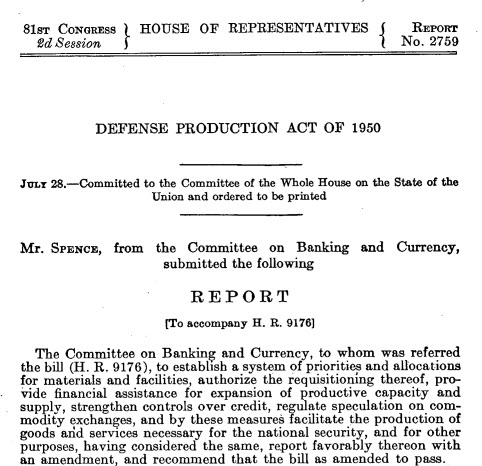This month, HeinOnline continues its Secrets of the Serial Set series with a look back on the disastrous sinking of the RMS Titanic.
Secrets of the Serial Set is an exciting and informative monthly blog series from HeinOnline dedicated to unveiling the wealth of American history found in the United States Congressional Serial Set. Documents from additional HeinOnline databases have been incorporated to supplement research materials for non-U.S. related events discussed.
These posts have been so informative; they enable both patrons and staff to understand what the Serial Set is and how invaluable it is to all kinds of research.
The U.S. Congressional Serial Set is considered an essential publication for studying American history. Spanning more than two centuries with more than 17,000 bound volumes, the records in this series include House and Senate documents, House and Senate reports, and much more. The Serial Set began publication in 1817 with the 15th Congress, 1st session. U.S. congressional documents prior to 1817 are published as the American State Papers.
The Serial Set is an ongoing project in HeinOnline, with the goal of adding approximately four million pages each year until the archive is completed. View the current status of HeinOnline’s Serial Set project below.
U.S. Entry into World War II
A Country Unprepared
In 1941, the United States of America was thrust into the fray of World War II after the Empire of Japan launched a surprise attack on the U.S. Pacific Fleet at Pearl Harbor. The primarily European and Asian hostilities soon escalated into a global conflict as the U.S. formally declared war on Germany, Italy, and Japan.

Though the U.S. would eventually join the Allies in victory, the country’s prospects did not look promising at the start. In fact, the country was wholly unprepared for a major conflict. Just prior to the start of World War II, the United States (and the rest of the Western world) had been floundering under the weight of the decade-long Great Depression, the most severe economic downturn in world history.
Hoping to foster a unified war effort from both individuals and industries, the U.S. embarked on a World War II propaganda campaign. While men left for the front, Rosie the Riveter encouraged women to seek out manual labor and factory work. Meanwhile, posters and magazines asked families to do what they could for the war by purchasing war bonds, conserving food and gas, and collecting and recycling scrap metal for military use.
Industries were also encouraged to join the cause by finding ways to contribute their resources toward wartime production. However, with many businesses still licking their wounds from the Great Depression, much of the industrial sector balked at the thought of investing in defense.
Expansion of Presidential War Powers
To manage those industries that wouldn’t cooperate, a bill was introduced in the House to confer upon the President special wartime powers, later signed into law by President Franklin D. Roosevelt as the War Powers Acts. The new legislation granted Roosevelt wide-reaching presidential authority, including the ability to compel industries to manufacture wartime products.

Soon, car factories were reimagined as defense production plants that produced warplanes, armored cars, amphibious trucks, and other wartime vehicles. Nylon manufacturers began to produce equipment like aircraft fuel tanks, shoelaces, or mosquito netting, rather than women’s stockings. Producers of beer cans transitioned to the business of hand grenades, and lipstick-makers tried their hand at the increasingly profitable industry of bomb cases and bullet cartridges.
Post-WWII Threats from the East
Passing the Defense Production Act
Once the war was over, businesses resumed the production of goods and services for the general public. The wartime authorities awarded to the President disappeared, but the War Powers Acts had nonetheless set a precedent for the expansion of executive power in times of national emergency.
Five years later, another war loomed. In June of 1950, the North Korean People’s Army invaded its neighbor South Korea with support from the Soviet Union and China. Caught unawares, the Truman administration feared that this move was the first of a worldwide Communist takeover, and that another conflict with Russia and China may be on the horizon. Anxious to quell a potential World War III, President Truman appealed to Congress that July for an increase to defense spending and for the authority to oversee economic mobilization toward the new war effort.

A few days later, the bill that would become the Defense Production Act (DPA) was introduced to the House. Similar to the War Powers Acts in its expansion of presidential authority, the Defense Production Act gave President Truman the broad authority to control and alter national economic policy in a number of ways, including by rationing consumer goods, fixing wage and price ceilings, and forcing manufacturers to prioritize government defense-related contracts.

Subsequent Use of the DPA
The original Defense Production Act included a sunset provision that required periodic re-authorization to avoid expiration. Unlike the War Powers Acts preceding it, the DPA did not expire at the end of the war. In fact, since its passage in 1950, it has been reauthorized more than 50 times and invoked on a number of occasions.
During the Cold War, the Department of Defense used the act to provide capital, loans, mining and manufacturing resources, and laborers for the expansion of America’s titanium industry. In the 1990s, the Department used the act again to fund the development of new materials and technologies. President Bill Clinton was criticized during his presidency for invoking the act to force the sale of natural gas to California during the state’s energy crisis.
The DPA in the 21st Century
The act has routinely been put to use in more recent times, as well. The Federal Emergency Management Agency has invoked the act as a way to prioritize housing, food, and bottled water contracts following natural disasters. In 2011, President Barack Obama used the act to combat Chinese cyberespionage, compelling telecommunications companies to inform the government about the use of foreign-made hardware or software in their networks. In 2017, President Donald Trump invoked the DPA to allow the Department of Defense to address technology shortfalls in the space industrial base and in adenovirus vaccine production.
The Defense Production Act has once again resurfaced during the recent COVID-19 outbreak in the United States. After acknowledging the World Health Organization’s designation of COVID-19 as a global pandemic, President Donald Trump soon declared a national emergency regarding the spread of the disease. Many wondered whether the President would use the Defense Production Act in this situation to ensure the steady production of ventilators and protective gear. Though he initially amended the DPA standard, designating this type of equipment “essential to the national defense,” Trump was at first reluctant to formally invoke the act within the industrial sector. However, since March 27, 2020, Trump has used the Defense Production Act to compel six companies, including General Motors, to manufacture emergency health supplies.
Help Us Complete the Project
If your library holds all or part of the Serial Set, and you are willing to assist us, please contact Shannon Hein at 716-882-2600 or shein@wshein.com. HeinOnline would like to give special thanks to the following libraries for their generous contributions which have resulted in the steady growth of HeinOnline’s U.S. Congressional Serial Set.
- Wayne State University
- University of Utah
- UC Hastings
- University of Montana
- Law Library of Louisiana
- George Washington University
- University of Delaware
We will continue to need help from the library community to complete this project. Download this Excel file to see what we’re still missing from the Serial Set.



